What’s Up?
Sunday morning dawned hazy, and the sun was in and out between 7 and 8am. I did a little of this and a little of that and was about to head home. I decided to check the area just to the south of the pier one last time. Looking under the pier to the other side I saw a Great Blue Heron in the marsh with what looked like a large fish in its bill. I quickly drove to the north side of the pier. Once I got in position, I saw that the prey was a large marsh rat. I made some very nice images at 1200mm with the big lens supported by the BLUBB. The bird moved away from the pier to the north, so I parked, set up the tripod, move slowly to my right, and made some more good images at 1200mm. Photos soon.
My new Sony 400mm f/2.8 GM lens was delivered on Sunday by 2nd Day Air Fed Ex. As always, Bedfords did a perfect job with any order and the shipping. I believe that the second 400/2.8 sold to a BIRDS AS ART disciple. The lens sits in the unopened box on my dining room floor. I do not foresee using it a lot at ILE and it would not do well with the 600 f/4 on the front passenger seat of my SUV … I will be doing a blog post on the whys and wherefores of my newest lens fairly soon.
Today is Monday 23 May 2022. I just looked out the pool deck door to check the weather — it looks clear and still with a big of haze in the air. It is supposed to cloud up quickly. Wherever you are and whatever you are doing, I hope that you too have a great day. This blog post took three hours to prepare (including the time spent on the image optimization and creating the screen captures) and makes seventy-three days in a row with a new one.
Be sure to read and view all the way down as there is a ton to learn below.
Please remember to use the B&H and Amazon links that are found on most blog pages and to use the BIRDSASART discount code at checkout when purchasing your new gear from Bedfords. Please, also, consider joining a BAA IPT. You will be amazed at how much you will learn!
BIRDS AS ART Image Optimization Service (BAA IOS)
Send a PayPal for $62.00 to birdsasart@verizon.net or call Jim at 863-692-0906 and put $62.00 on your credit card. Pick one of your best images and upload the raw file using a large file sending service like Hightail or DropBox and then send me the link via e-mail. I will download and save your raw file, evaluate the exposure and sharpness, and optimize the image as if it were my own after converting the raw file in Adobe Camera Raw. Best of all, I will make a screen recording of the entire process and send you a link to the video to download, save and study.
Wanting a Sony 600mm GM lens or a Nikon Z9?
If you want to get your hands on a Sony 600mm f/4 GM, get in touch with Steve Elkins at Bedfords ASAP as below. Both a Sony 400mm f/2.8 GM lenses sold quickly.
The best way to get your hands on a Z9 is to join NPS (Nikon Professional Services) and then send your member number to Steve Elkins at Bedford via e-mail. Nikon insists that Z9s (and other hard to get stuff) go to NPS members. You can get one from B&H, but they have a huge wait list …
|
|
|
This image was created on 28 June 2021 at Huguenot Memorial Park in Jacksonville. I used the no-longer available Induro GIT 304L tripod/Levered-Clamp FlexShooter Pro-mounted Sony FE 600mm f/4 GM OSS lens and The One, the Sony Alpha 1 Mirrorless digital camera. ) The exposure was determined using Zebra technology with ISO on the Thumb Dial. ISO 1250: 1/80 second at f/6.3 (stopped down 1 1/3 stops) in Manual Mode. AWB at 6:40:19am on a cloudy morning. RawDigger showed the raw file brightness to be 1/3 stop too dark. Tracking: Zone AF-C with Bird/Eye-Face Detection enabled. Be sure to click on the image to enjoy the high-res version. Image #1: the Photo Mechanic screen capture for the Royal Tern in flight with baby Blue Crab for young image |
The Photo Mechanic Screen Capture
First off, note the shutter speed: 1/80 second. Next, note that the histogram seems to show that the raw file is properly exposed to the right. RawDigger, however, showed that I could have used more than one-half stop of additional light to be dead-solid perfect.
What Was I Thinking?
Why a shutter speed of 1/80 second for flight? The classic blur speeds for photographing single birds in flight are from 1/15 to 1/50 sec. On very rare occasion, you can get the eye or eyes sharp at those speeds. You increase your chances of getting a sharp eye by increasing the shutter speed to somewhere between 1/60 and 1/125 second while producing nicely blurred wingtips if the bird is flapping. Higher shutter speeds in the range of 1/160 to 1/500 sec. can also pull that off.
Induro GIT304L Grand Series 3 Stealth Carbon Fiber Tripod
I learned recently that the MAC Group quit making the great Induro tripods because of increasingly high trade tariffs imposed on goods made in China (where the tripods were being made). I have been using the 304L as my workhorse tripod for more than a decade. The 304 L is perfect for folks under 6′ 1″ tall using big glass. I used mine in and around saltwater with impunity. Though it is sturdy and rigid and can support any large super-telephoto rig, it weighs only 4 lbs 10.7 oz. It costs many hundreds of dollars less than the overpriced, overdone, clunky Really Wrong stuff tripod. The 304L meshes perfectly with the Levered-Clamp FlexShooter Pro that I love and use every day. And please do not insult this great head by mentioning the worthless and now obsolete RWS BH-55 bullheads in the same sentence …
Amazingly, we have two brand (and only two) new-in-the-box Induro GIT 304L tripods in stock. They are $799.00 each plus the shipping. Weekday phone orders only: 863-692-0906.
|
|
Image #1A: this is the color corrected, converted, and cropped .TIF file for the Royal Tern in flight with baby Blue Crab for young image |
The Converted .TIF File
First, note the single large dust spot under the bend of the left wing of the sharp bird. I realize that some might like this image best with the second bird in the background, but with the wingtips of the bird in the background cut off, my choice was to eliminate it.
|
|
|
This image was created on 28 June 2021 at Huguenot Memorial Park in Jacksonville. I used the no-longer available Induro GIT 304L tripod/Levered-Clamp FlexShooter Pro-mounted Sony FE 600mm f/4 GM OSS lens and The One, the Sony Alpha 1 Mirrorless digital camera. ) The exposure was determined using Zebra technology with ISO on the Thumb Dial. ISO 1250: 1/80 second at f/6.3 (stopped down 1 1/3 stops) in Manual Mode. AWB at 6:40:19am on a cloudy morning. RawDigger showed the raw file brightness to be 1/3 stop too dark. Tracking: Zone AF-C with Bird/Eye-Face Detection enabled. Be sure to click on the image to enjoy the high-res version. Image #1B: the master file (optimized version) of the Royal Tern in flight with baby Blue Crab for young image |
The Optimized Version
The bird in the background was removed using a series of Quick Masks refined with Regular Layer Masks. The fact that the wings of the subject bird were blurred made working along the edge of those wings a bit easier than if they had been sharp.
There is lots of time for Photoshop lessons on the Jacksonville IPTs.
Your Call?
Would you have liked this image better with the second bird? Why or why not?
|
|
The BIRDS AS ART Current Workflow e-Guide (Digital Basics II).You can order your copy from the BAA Online Store here, by sending a PayPal for $40 here, or by calling Jim or Jennifer weekdays at 863-692-0906 with your credit card in hand. Be sure to specify Digital Basics II. |
The BIRDS AS ART Current Workflow e-Guide (Digital Basics II)
The techniques mentioned above and tons more great Photoshop tips and techniques — along with all my personalized Keyboard Shortcuts — are covered in detail in the BIRDS AS ART Current Workflow e-Guide (Digital Basics II), an instructional PDF that is sent via e-mail. Learn more and check out the free excerpt in the blog post here. While the new e-Guide reflects my MacBook Pro/Photo Mechanic/DPP 4/Photoshop workflow, folks using a PC and/or BreezeBrowser will also benefit greatly by studying the material on DB II. Note: folks working on a PC and/or those who do not want to miss anything Photoshop may wish to purchase the original Digital Basics along with DB II while saving $15 by clicking here to buy the DB Bundle.
Folks who learn well by following along rather than by reading can check out the complete collection of MP 4 Photoshop Tutorial Videos by clicking here. Note: all the videos are now priced at an amazingly low $5.00 each.
You can learn how and why I converted all my Canon digital RAW files in DPP 4 in the DPP 4 RAW Conversion Guide here. More recently, I became proficient at converting my Nikon RAW (NEF) files in Adobe Camera Raw. About three years ago I began converting my Nikon and Sony RAW files in Capture One and did that for two years. You can learn more about Capture One in the Capture One Pro 12 Simplified MP4 Video here. The next step would be to get a copy of Arash Hazeghi’s “The Nikon Photographers’ Guide to Phase One Capture One Pro e-Guide” in the blog post here.
You can learn advanced Quick Masking and advanced Layer Masking techniques in APTATS I & II. You can save $15 by purchasing the pair.
|
|
|
Be sure to click on the cropped image to view the amazing sharpness and enjoy the high-res version. Image #1C: a tight unsharpened crop of the Royal Tern in flight with baby Blue Crab for young image |
Seemingly Not Possible …
The trick to getting the eye perfectly sharp at relatively slow shutter speeds is to pan perfectly along with the bird in flight. Though the Levered-Clamp FlexShooter Pro is great for panning smoothly, I do not always pull this off every time …
For me, the sharpness of the tern’s eye at 1/80 sec. is nothing short of astounding.
|
|
Image #1D: an A7INFO screen capture for the Royal Tern in flight with baby Blue Crab for young image |
Amazing Bird-Face/Eye Detection AF
Click on the screen capture above to see the location of the active AF point. Not bad …
|
|
|
Click on the image to better see the green eye-AF boxes in action. Sony Alpha 1 Flight Photography AF Points! |
The SONY Alpha a1 Set-up Guide and Info Group: $150.00 (or Free)
The SONY Alpha a1 Set-up Guide and Info Group is going great guns as more and more folks chime in with thoughtful questions and experience-based answers. As the a1 is becoming more readily available, more and more folks are getting their hands on this amazing body. By early April, the group was up to an astounding 115 lucky and blessed folks. Early on, we discussed the myriad AF options. I gave my opinion as to the best one for flight and general bird photography. The best news is that everyone in the group receives an e-mail that includes a .DAT file with my a1 settings on it, and explicit directions on how to load my settings onto your a1; talk about convenience! I am now offering a .DAT file compatible with firmware update 1.20. Your entry into the group includes a consolidated Sony a1 CAMSETA2 INFO & GUIDE. New a1 folks will now receive four e-mails instead of the previous 28! You will see new e-mails as they are published. Simply put, this e-mail guide is an incredible resource for anyone with an a1.
All who purchased their Alpha 1 bodies via a BAA affiliate link — B&H or Bedfords — will receive a free Sony Alpha a1 Set-Up Guide and free entry into the Info Updates group after shooting me their receipts via e-mail. (Note: it may take me several days to confirm B&H orders.). Others can purchase their guide here in the BAA Online Store.
|
|
|
Click on the composite image to enjoy the incredible quality of the hi-res JPEG. Clockwise from upper left clockwise and back around to the center: Royal Tern in flight with squid for chick; Royal Tern chick on beach; Royal Tern in flight with shrimp for young; Royal Tern chick — double overhead wing stretch; Royal Tern landing with greenback for chick; Royal Tern in flight with juvenile mahi mahi for chick; Brown Pelican — large chick preening; Laughing Gull in fresh juvenal plumage; Royal Tern chick begging; Many Royal Terns with many chicks on face of dune. |
Jacksonville IPT: #1: 4 FULL DAYS — the afternoon of 16 June thru the morning of MON 20 June 2022: $2,099.00. (Limit 6 photographers)
Jacksonville IPT #2: 4 FULL DAYS — the afternoon of FRI 1 JULY thru the morning of TUES 5 July 2022: $2099.00 (Limit 6 photographers)
Jacksonville IPT #3: 4 FULL DAYS — the afternoon of FRI 15 JULY thru the morning of TUES 19 July 2022: $2099.00 (Limit 6 photographers/Openings: 5)
Ride with me: add $200.00. I do not like to disappoint: each trip will run with one participant. If necessary.
I first visited the breeding bird colony at Jacksonville in late June 2021. I was astounded. There were many thousands of pairs of Royal Terns nesting along with about 10,000 pairs of Laughing Gulls. In addition to the royals, there were some Sandwich Terns nesting. And there are several dozen pairs of Brown Pelicans nesting on the ground. Flight photography was non-stop astounding. And photographing the tern chicks was relatively easy. Folks could do the whole trip with the Sony 200-600, the Canon 100-500 RF, or the Nikon 500 PF or 200-500 VR. With a TC in your pocket for use on sunny days. Most of the action is within 100 yards of where we park (on the beach). As with all bird photography, there are times when a super-telephoto lens with either TC is the best tool for the job.
Morning sessions will average about three hours, afternoon sessions about 1 1/2 hours. On cloudy mornings with favorable winds, we may opt to stay out for one long session and skip the afternoon, especially when the afternoon forecast is poor. Lunch is included on the first three days of the IPT and will be served at my AirBnB. After the first lunch there will be an introductory program. On days two and three we will do image review and Photoshop after lunch.
We will be based somewhere west and a bit north of Jacksonville where there are many AirBnB possibilities. The deposit is $599.00. Call Jim at the office any weekday at 863-692-0906 to pay by credit card. Balances must be paid by check.
What You Will Learn on a Jacksonville IPT
- 1- First and foremast you will learn to become a better flight photographer. Much better.
- 2-You will learn the basics and fine points of digital exposure. Nikon and Canon folks will learn to get the right exposure every time after making a single test exposure, and SONY folks will learn to use Zebras so that they can be sure of making excellent exposures before pressing the shutter button.
- 3- You will learn to work in Manual exposure mode even if you fear it.
- 4- You will learn to evaluate wind and sky conditions and understand how they affect bird photography, especially the photography of birds in flight.
- 5- You will learn several pro secrets (for each system) that will help you to become a better flight photographer.
- 6- You will learn to zoom out in advance (because the birds are so close!) 🙂
- 7- You will learn how to approach free and wild birds without disturbing them.
- 8- You will learn to spot the good and the great situations.
- 9- You will learn to understand and predict bird behavior.
- 10- You will learn to design pleasing images by mastering your camera’s AF system.
- 11- You will learn to choose the best perspective.
- 12- You will learn to see and control your backgrounds.
- 13- You will learn to see and understand the light.
- 14- You will learn to see and create pleasing blurs in pre-dawn situations.
- 15- You will learn to be ready for the most likely event.
And the best news is that you will be able to take everything you learn home with you so that you will be a better photographer wherever you are and whenever you photograph.
Typos
With all blog posts, feel free to e-mail or to leave a comment regarding any typos or errors.

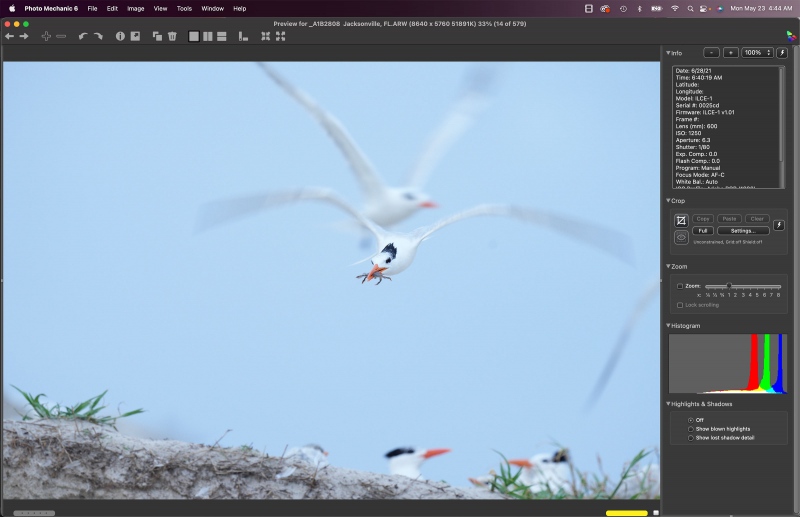
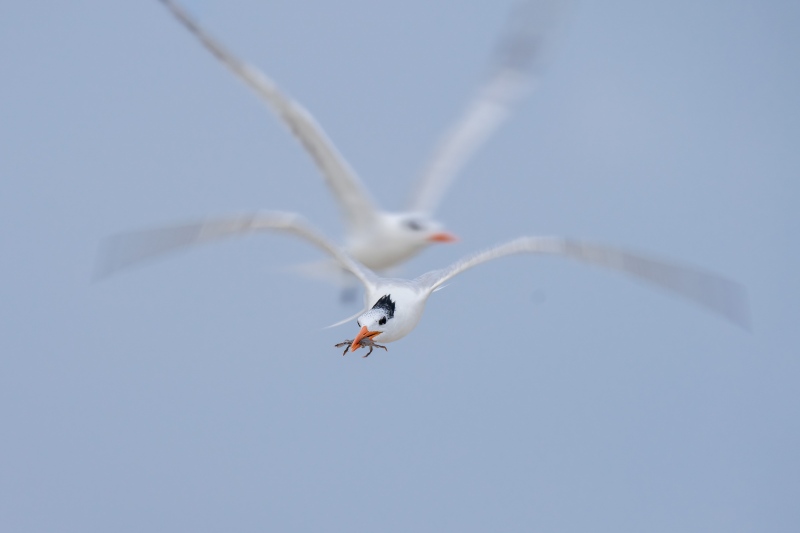
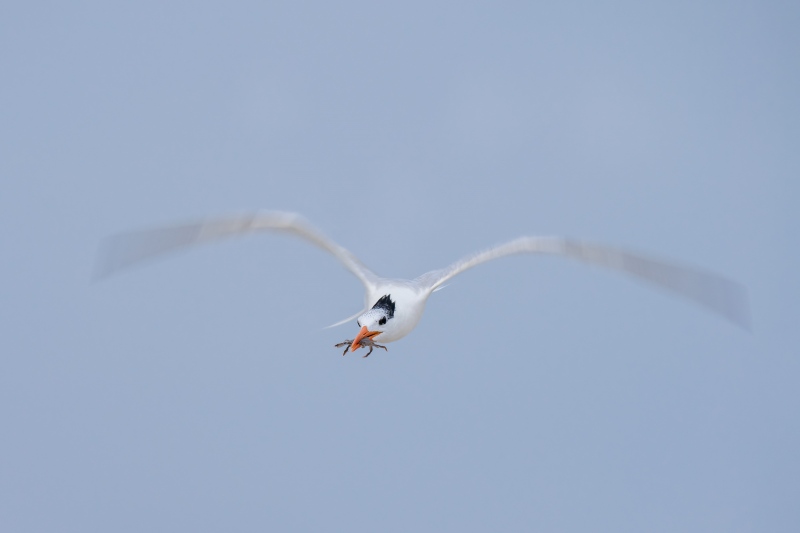

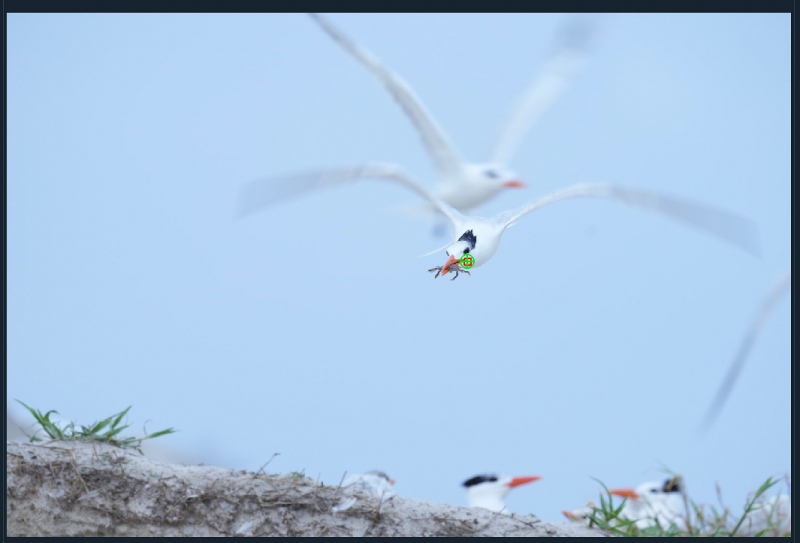
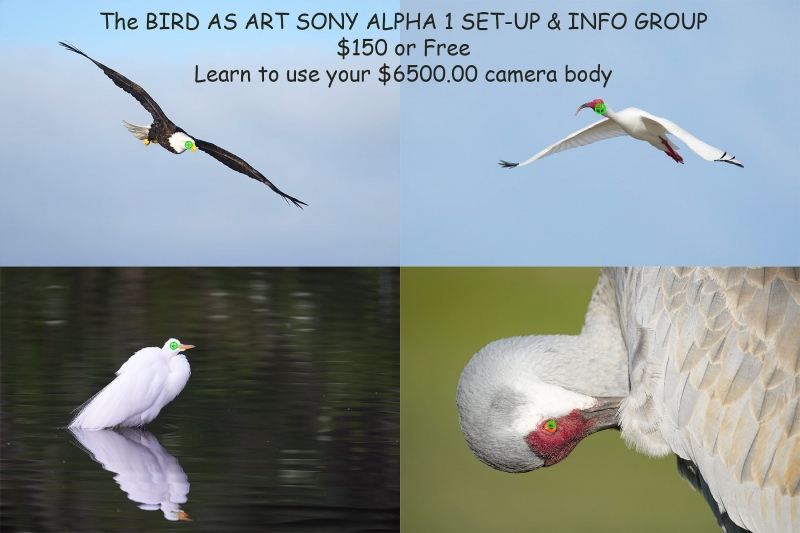
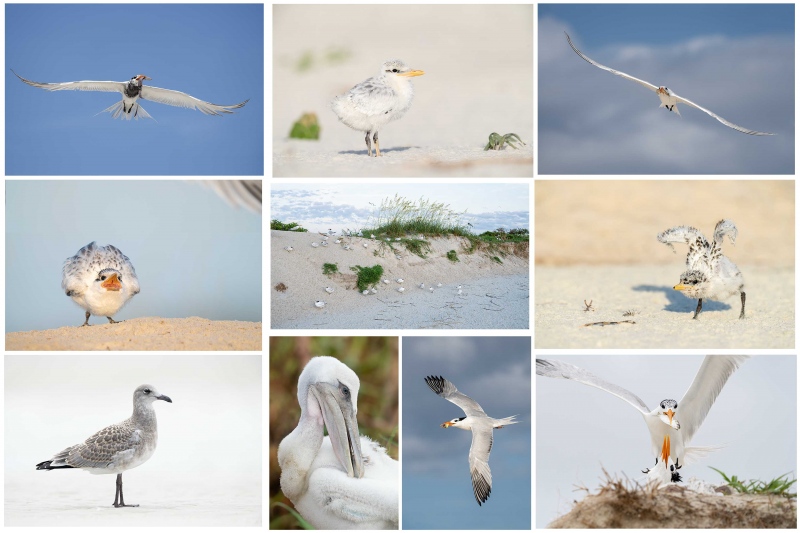













Wonderful image, Artie. Great thoughts on the 1/80 sec shot. Time and again you have a terrific shot by moving away from conventional “rules”.
Much appreciated, Eric.
with love, artie
Personally I like the second bird because it adds both depth and story to the image. I like the close crop as well, but that’s a totally different image. In any case, getting the eye sharp was indeed remarkable at that speed and angle.
Thanks for commenting, Ellen. It was great catching up yesterday.
with love, artie
Take the one extra wing out, and the original full frame (image #1D) is sweet too.
Thanks, Cliff. I thought about that. And about adding some canvas below…
with love, a
Hi, Artie. I love the image with the second bird. Without it it’s a nice shot; with it, it’s a memorable image.
Thanks, David. At least one person responded. Made my day 🙂
with love, artie
Typo or missing word(s): you can the eye or eyes sharp at those speeds
Thanks and fixed. with love, artie
I think you may mean “Blue Crab”, rather than “Blue Crane”?? Strangest looking baby crane that I’ve ever seen!
Hey Maggie, I think that you are correct 🙂 I am not sure that a tern could catch and carry a baby blue crane 🙂
a